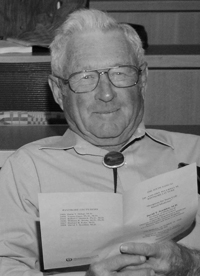
Dr. John W. Athens

Dr. Athens served as Chief of Hematology from 1967 to 1991. He earned his M.D. from The Johns Hopkins University in 1948 and completed his internship at Peter Bent Brigham Hospital. There, he developed an early interest in hematology through his interactions with Dr. Clement Finch, an attending physician, and Dr. Charles Rath, a resident and hematology fellow.
Awarded a two-year Atomic Energy Commission (AEC) fellowship at Johns Hopkins, his research was interrupted after fourteen months by his service in the Korean War. This fellowship led to his assignment at the Army Medical Service Graduate School, where he helped establish a radioisotope laboratory. During this time, he reconnected with Charles Rath—then Chief of Hematology at Georgetown Medical School—and began research on thyroid physiology and blood cell survival.
In 1952, Dr. Athens secured a residency at the University of Utah, where he formed a strong collaboration with Dr. Cartwright. In 1954, he entered hematology research training, focusing on nutritional anemias in pigs caused by deficiencies in copper, amino acids, and various vitamins. His expertise in red cell survival techniques proved instrumental in developing a method for labeling neutrophils, which later became the foundation for his groundbreaking research on neutrophil survival, kinetics, and pool dynamics in both normal and diseased states.
Dr. Athens' contributions to hematology were pioneering, and many of his publications are regarded as classics in the field.